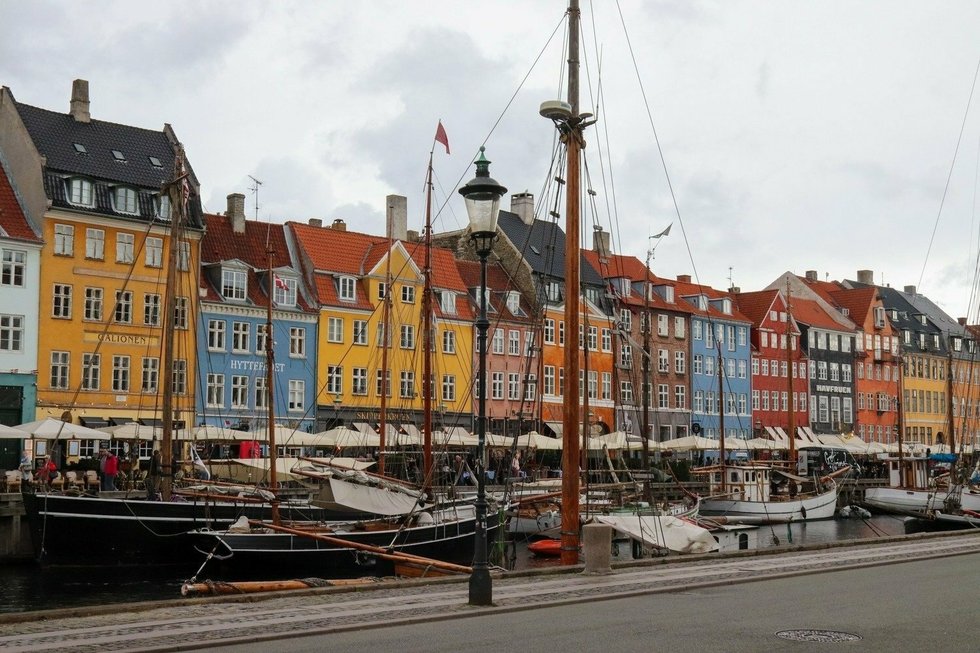Mastering the art of workplace wellbeing: 5 lessons from Denmark
Jan 06, 2021 - updated Aug 29, 2024
5 mins

For many years now, Denmark has been at the top of several international rankings, such as the World Happiness Report. It also has some of the most productive employees. Denmark’s reputation for happiness has remained relatively intact in recent years.
Remote working was common in the country long before the pandemic, as many aspects of Danish work culture helped to make it a viable option. Danish workplaces are known for autonomy, gender equality, paternal involvement in childcare, a superb work-life balance, less focus on hierarchy and status, and a higher level of trust—including with managers.
In many respects, Denmark is a world leader when it comes to workplace wellbeing and the prevention of psychosocial risks in areas such as anxiety or loneliness. This is why business activity and the work-life balance of its citizens remains thriving. Seeing as the Danes are pioneers of good workplace practices, we can see Denmark as a rich source of inspiration for organizations everywhere. Here are five lessons to get you started.
1. Work-life balance is sacred
Having shorter working days is the main reason why Danes are at the top of the rankings of the world’s most productive people. Their days end at 4 PM—and that goes for executives, too. And while there may be a few exceptions, employees don’t start at 7am, but generally at 9am. Since it gets dark early in Denmark, you need to have time to enjoy the sun.
At any rate, you won’t see Danes clocking in. Employees control their own schedules. And when it comes to peer pressure at the office, those who linger past 4pm are seen as inefficient and disorganized. Denmark’s workplace culture is not based on the how often they’re seen in office: wherever they choose to work, Danes are not micromanaged by superiors, and doing overtime is frowned upon.
In fact, having a good work-life balance is so important that managers strive to lead by example and to spot employee burnout proactively. Many managers leave the office early to work out or play sports. Another common practice among managers is to meet regularly with employees to ensure their wellbeing, asking questions such as, “Haven’t you been working a bit too hard these days?” or “Is everything okay?”
2. To stay sane at work, you have to be realistic
For some years now, people have been praising the Danish concept of hygge: the Nordic way of life that allows you to stay positive during the long winter months by cozying up in thick blankets, wearing wool socks and lighting decorative candles. But these details are only superficial—hygge has many other facets, especially at work.
The word hygge comes from hyggja, a word that meant “to think” in the Middle Ages. Hygge took on its current meaning during the 19th century when the Danish kingdom lost most of its territory to Sweden, Austria, and Prussia. From that moment on, “the Danes began to identify with simplicity,” said Louisa Thomsen Brits in The Book of Hygge. This quality is reflected in the word hygge to this day.
The modern definition of hygge thus became the ability to gain satisfaction with less, take what life gives you—and be realistic. Meik Wiking, director of the Institute for Happiness Research in Copenhagen, said that hygge is a “survival strategy.” In terms of work, this means two things:
Promoting individual emotional security through corporate culture.
As Wiking said, this approach gives you “the sense of being safe, safe from the world, and that you can let your guard down.” In other words, people are encouraged to be themselves. As a result, workplace culture becomes inclusive, giving everyone the opportunity to be their absolute best.
Setting realistic goals.
Sky-high goals may indicate strong ambition, but they are not conducive to employee wellbeing. The higher your goals, the less chance you have of achieving them—and the more likely you are to feel bad about yourself. When you look at the formula—happiness = reality – expectations—it’s obvious that lowering your expectations helps to increase your happiness. And that’s not exactly rocket science.
3. Employees are encouraged to embrace their inner artisan
Craftsmanship is not just the preserve of artisans or those who work with their hands, but a philosophy of work based on a set of values such as autonomy, responsibility, know-how, mentorship, and creativity. These values are particularly important to the way Danes work. For example, the concept of “self-management” is becoming increasingly popular around the world. This approach to the workplace is non-hierarchical and it encourages the collective entrepreneurship of individuals.
What’s more, the importance placed on trust—at school and in the office—in Danish culture means that employees are given a great deal of autonomy. That’s another reason why results, as long as they are realistic, are more important than the hours you work (see lesson #1). In short, whether you are an employee or not, you are free to choose whatever means you like to achieve the goals you’ve set for yourself. Now that’s true craftsmanship.
Moreover, Danish organizations are generally more egalitarian than hierarchical, as Erin Meyer explains in The Culture Map. Here’s what we wrote about her book a few years ago:
“In egalitarian cultures, such as Denmark, Sweden, or the Netherlands, ‘the ideal distance between a boss and a subordinate is low.’ Bosses are facilitators among equals. Corporate structures are quite flat and communication can skip regular hierarchical lines. ‘The belief that individuals should be equal and that individual achievement should be downplayed has been a part of Scandinavian society for centuries’.”
Remote working is much easier when the workplace culture provides greater equality and the management structure is flat. Managers don’t feel like they are losing status and benefits, as is often the case in more hierarchical workplace cultures. Therefore, remote working and wellbeing are concepts that go hand-in-hand.
4. No matter where you work, ergonomics is the key to productivity
The quality of a working environment is sometimes judged by the trendy color of the walls or how many games tables there are. This is obviously far too simplistic—without autonomy and trust, employees feel alienated and unhappy in even the most beautiful offices. Even the most expensive ergonomic chair on the market won’t make your work more meaningful.
At the same time, the working environment and ergonomics should not be overlooked. This is where the Danes are truly the leaders. Their offices are often equipped with beautifully-designed ergonomic furniture, where “form follows function.” Height-adjustable tables are common, so employees can move around more. And they’ve been practicing the art of “active” meetings, where attendees stand or walk about, for some time now.
Thanks to their focus on flexibility and autonomy, remote working was already widespread before the pandemic. That’s why Danish employees are generally better prepared to work at home than workers in other countries. This is especially true given that hygge plays a key role in how the Danes furnish their homes. And Danish companies will cover a portion of the cost that an employee may need to set up a great home office.
Employees also have flexibility when it comes to where they work: office, home, coworking space, or café. This is facilitated by the Danish transport infrastructure, which is among the best in the world, with its cycle paths, pleasant underground, and excellent roads. Finally, Denmark is known for being very advanced when it comes to the digital realm, giving its workforce even greater flexibility.
5. Workplace wellbeing depends on gender equality!
While gender equality in Denmark is far from perfect, it has a reputation for being one of the most equal in the world. As Malene Rydahl, author of Happy as a Dane, explains: “Gender equality is important because men and women basically in Denmark have reached a point where we have a high level of equality… One of the reasons why it’s so successful in Denmark and not in the Scandinavian countries, in general, is that we’ve also liberated the men.”
What is considered a “feminist issue” in many countries, such as paternity leave, is considered “normal” in Denmark. And although relatively few Danes declare themselves feminists, the Danish approach to gender equality is not unlike their approach to workplace wellbeing—actions speak louder than words.
Translated by Andrea Schwam
Photo by Thomas Decamps for Welcome to the Jungle
Follow Welcome to the Jungle on Facebook, LinkedIn, and Instagram, and subscribe to our newsletter to get our latest articles every week!

More inspiration: Laetitia Vitaud
Future of work author and speaker

Age does matter, at work and in the White House
What we've learned from the 2024 presidential elections about aging at work.
Sep 09, 2024

Can companies avoid a brain drain as retirements surge?
Bye bye, Baby Boomers. Hello, knowledge exodus?
Jun 12, 2024

Workplace anxiety: Navigating the future of work in an anxious world
Anxiety has taken center stage in our modern world. How is it shaping the future of work? And most of all, what can we do about it?
May 20, 2024

Why recruiters should hire more ex-freelancers
While freelance and salaried work can seem worlds apart, they may have more in common than you think.
May 02, 2024

How women over 50 are reinventing their careers and the future of work
Women in their 20s struggle to be taken seriously, while middle-aged women battle discrimination... So how are women over 50 reinventing the wheel?
Apr 02, 2024
The newsletter that does the job
Want to keep up with the latest articles? Twice a week you can receive stories, jobs, and tips in your inbox.

Looking for your next job?
Over 200,000 people have found a job with Welcome to the Jungle.
Explore jobs

